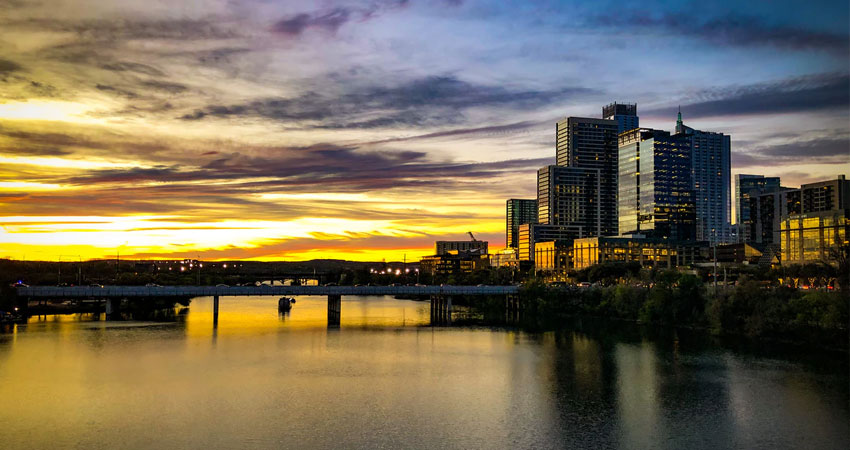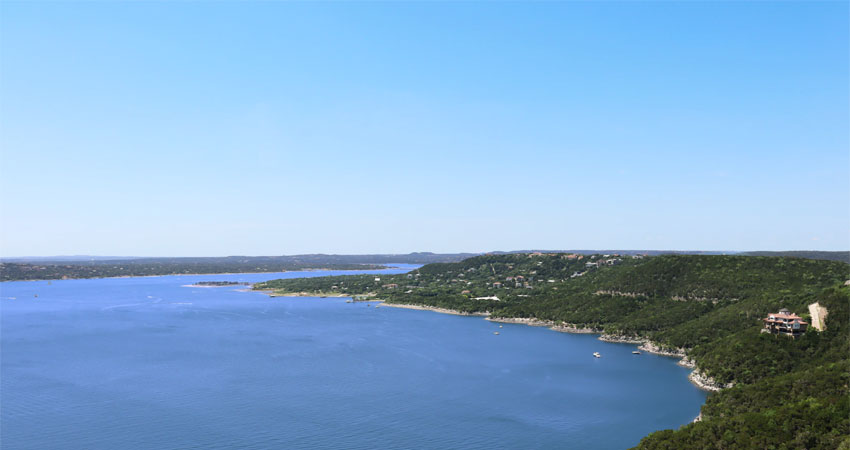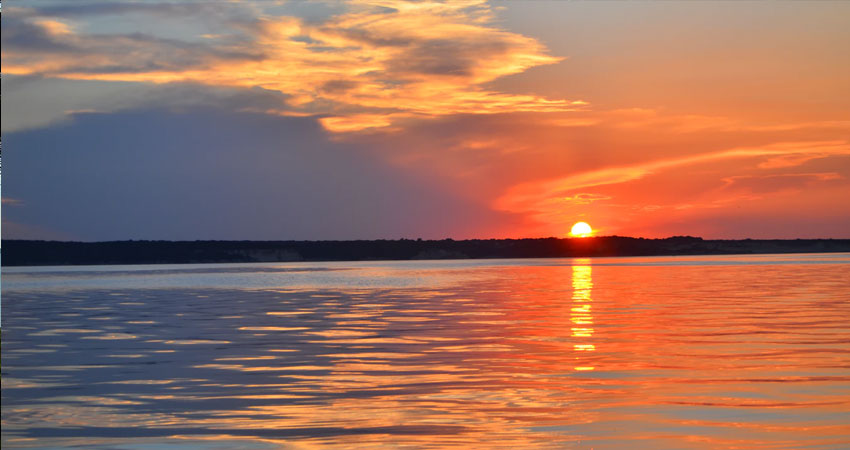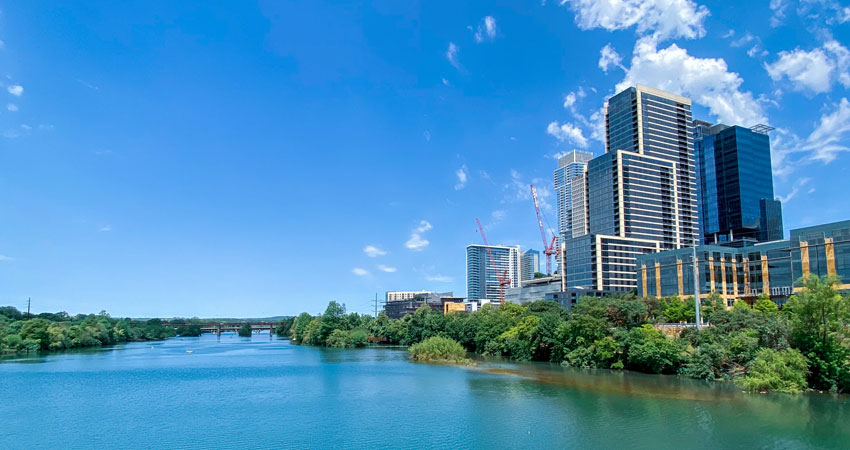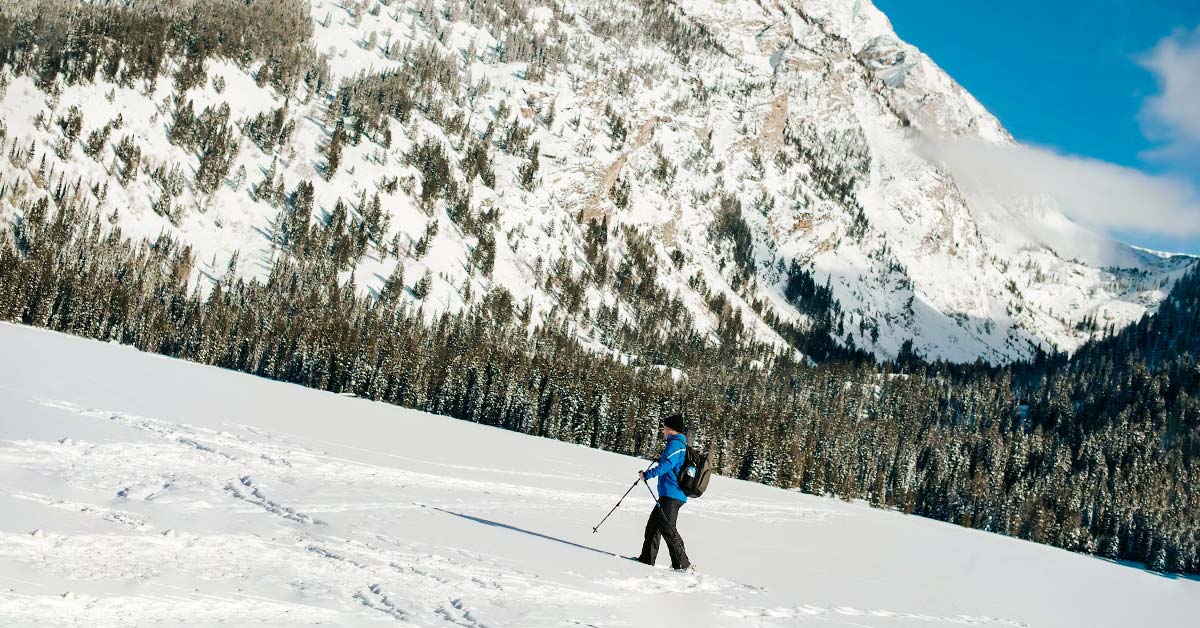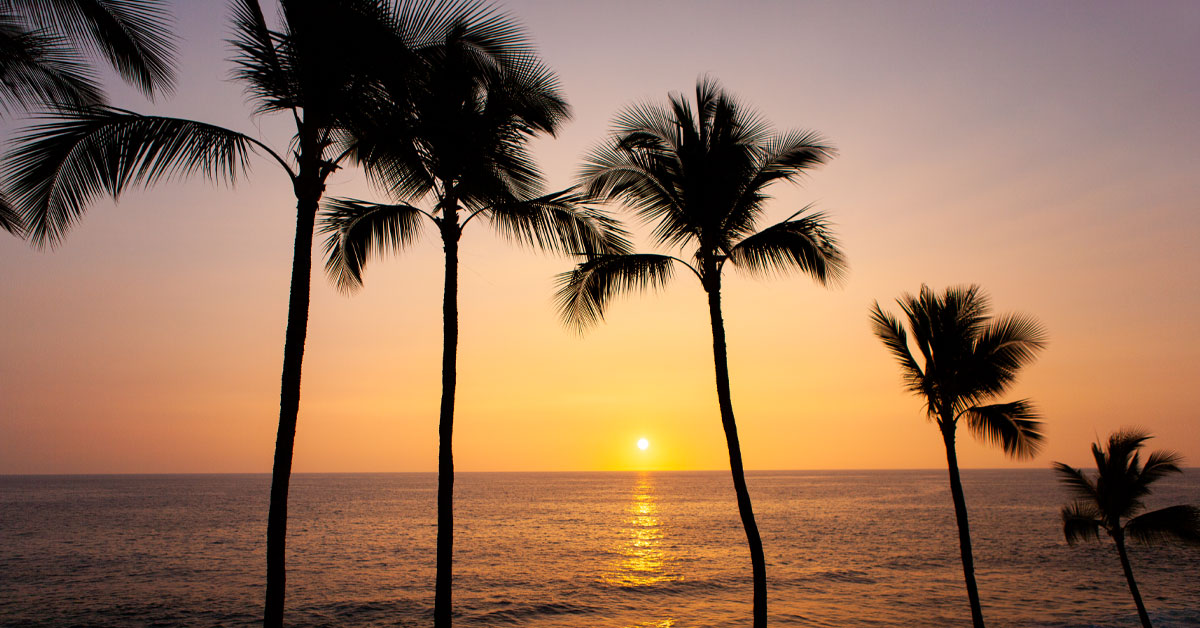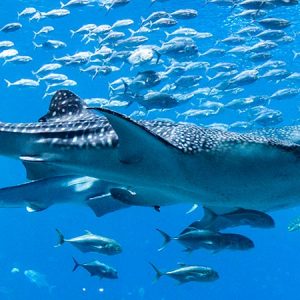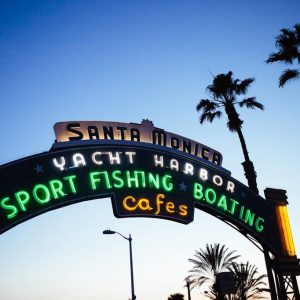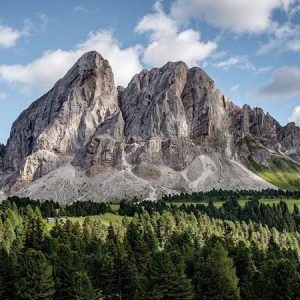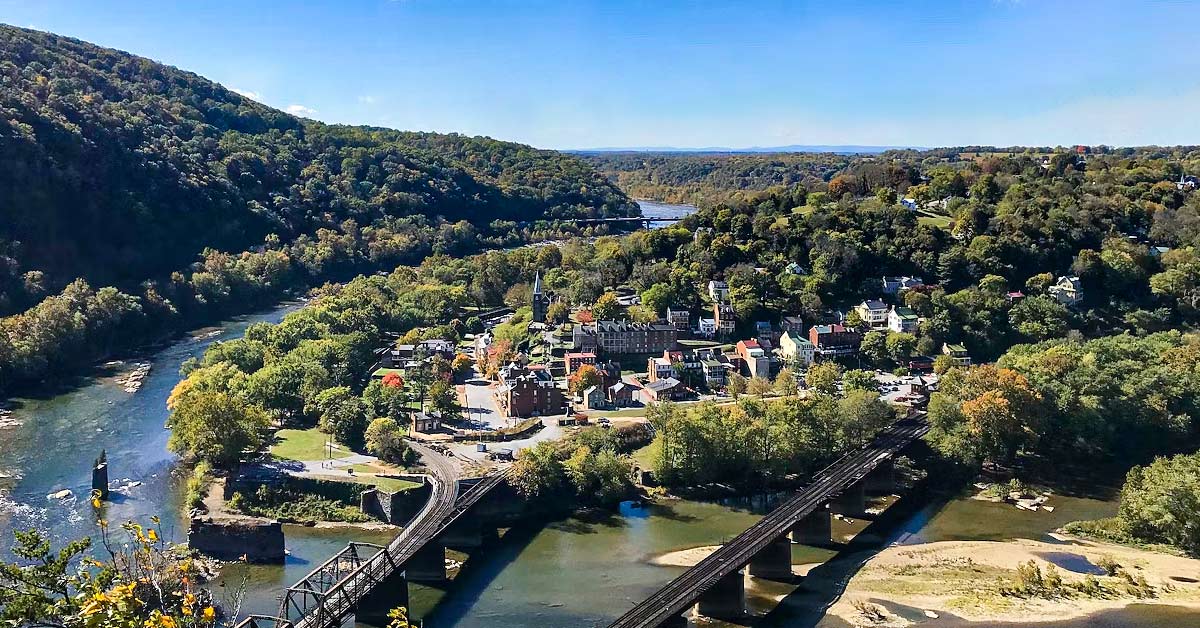Texas is often thought of as a landlocked state, but it actually borders the Gulf Coast to the south, and there are approximately 7,000 reservoirs and lakes in Texas, not to mention its rivers and streams.
It sometimes gets lost in barbecue, cowboy boots, and country music, but Texas has a huge lake culture. As a southern state with a warm and humid climate, summers can be a pain, and Texans certainly know how to enjoy and cool off in one of their lakes.
Whether you’re looking to go on a great outdoor adventure, do some water sports, or simply chill beside the lake and enjoy the sunshine and scenery, there’s a lake in Texas for you.
Here are some of the best lakes in Texas to choose from for your next escapade.
The 10 Best Lakes In Texas
1. Lake Travis
Known as: The Crown Jewel of the Central Texas Highland Lakes
The Highland Lakes of Texas Hill Country in Central Texas consist of six lakes along the Colorado River that were built by the Lower Colorado River Authority (LCRA): Buchanan Lake, Inks Lake, Lake LBJ, Lake Marble Falls, Lake Travis, and Lake Austin.
These are all marvelous lakes, but Lake Travis is by far the largest and the most popular among them.
Built in 1942 by the construction of the Mansfield Dam, its primary purpose was flood control, irrigation, and hydroelectric power.
Lake Travis is considered a premier recreational spot, attracting water sports enthusiasts, boaters, anglers, and swimmers alike.
With more than 270 miles of shoreline, there is plenty of room for homes, campgrounds, and parks. Windy Point Park and Montina Beach feature excellent swimming beaches, while Hippie Hollow Park is a clothing-optional beach with gorgeous views and a designated swimming area.
Divers delight in the depths within the lake, with some points reaching 210 feet, and anglers will enjoy fishing for largemouth, Guadalupe, white, and striped bass, as well as catfish, trout, crappie, and sunfish.
Residents of Austin can reach portions of Lake Travis with a half-hour drive.
Essential Information
Location: Travis and Burnet Counties, Hill Country, TX
Activities: Boating, canoeing, kayaking, swimming, fishing, sailing, windsurfing, tubing, wakeboarding, jet skiing, scuba diving, picnicking, hiking, golfing, camping
Popular access points: Pace Bend Park, Windy Point Park, Bob Wentz Park, Mansfield Dam Park, Montina Beach, Hippie Hollow Park
Nearby services and amenities: Marina, boat rentals, fishing guide shops, hiking trails, picnic amenities, volleyball courts, restrooms, zipline, bars, restaurants, convenience store, bait and tackle shop
Where to stay: Vacation rentals, hotels, bed and breakfast, lodges, campgrounds, RV parks
Nearby places of interest: Sometimes Island, Hamilton Pool Preserve, Westcave Outdoor Discovery Center, Barton Creek Habitat Preserve, Flat Creek Estate Winery & Vineyard
More information:
2. Lake Texoma
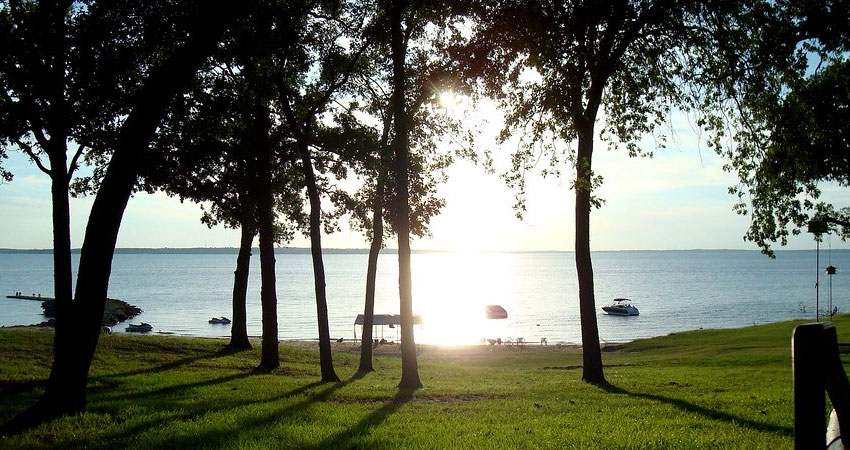
Known as: Best bass fishing lake in Texas
Lake Texoma was formed in 1944 when the U.S. Army Corps of Engineers created Denison Dam to prevent flooding of the Red River.
It straddles the Oklahoma–Texas border, northwest of Sherman–Denison.
It is the 12th largest lake in the United States and has over 1,000 miles of shoreline and a variety of destinations and access points, white sandy beaches, tree-covered slopes, and rugged rocky cliffs.
Annually, more than 6 million people visit the lake and do various watersports, fish, swim, or simply hang out on the beach. It’s also a popular spring break destination for local college students.
Texoma provides an excellent opportunity for anglers to land largemouth, smallmouth, spotted, white, and striped bass, as well as black and white crappie, blue and channel catfish, and bluegill.
For those who want to stay out of the water, the equestrian trails and hiking trails leading to bluffs overlooking the lake provide a breathtaking view.
Essential Information
Location: Denison County, Prairies & Lakes Region, TX
Activities: Boating, fishing, swimming, water skiing, windsurfing, jet skiing, kayaking, hiking, biking, horseback riding, golfing, hunting, camping
Popular access points: Eisenhower State Park, Cedar Mills Public Use Areas, Paradise Cove Public Use Area
Nearby services and amenities: Marinas, boat launches, horse trails, hiking trails, bait and tackle shops, golf courses, restaurants, restrooms
Where to stay: Resorts, hotels, cabins, lodges, campgrounds, RV parks
Nearby places of interest: Hagerman National Wildlife Refuge, Denison Dam, The Compass Rose Brigantine Ship
More information:
- Lake Texoma Guide
- Lake Texoma Online Guide
- Lake Texoma
- Hagerman National Wildlife Refuge | U.S. Fish & Wildlife Service
- Eisenhower State Park | Texas Parks and Wildlife Department
3. Lake Whitney
Known as: The Getaway Capital of Texas
Lake Whitney was formed when the Whitney Dam was built on the Brazos River, primarily for flood control, in 1954.
With its unspoiled natural beauty and 35 square miles of clear blue water, plenty of visitors come here for watersports and for the excellent views. It’s no surprise that this lake was officially designated as the Getaway Capital of Texas in 2005.
Lake Whitney is a favorite for waterskiing, jet skiing, and wakeboarding. Anglers will have a great time fishing for largemouth, smallmouth, striped, and white bass, as well as crappie, sunfish, and channel, blue, and flathead catfish.
Birdwatchers frequent this area too, as 195 species of birds have been spotted here; everything from wild turkeys to egrets and bald eagles have been spotted here, as well as ibis, hawks, falcons, woodpeckers, brown pelicans, bluebirds, and kestrels.
Wildlife watchers don’t need to feel left out; there are white-tailed deer, coyotes, foxes, bobcats, as well as armadillos and opossums.
Lake Whitney State Park is one of the last remaining places where visitors can walk through the prairies and seek shade under oak groves, in the midst of fields blooming with bluebonnets and Indian paintbrush.
Essential Information
Location: Bosque and Hill Counties, Prairies & Lakes Region, TX
Activities: Boating, sailing, canoeing, kayaking, waterskiing, jet skiing, wakeboarding, fishing, scuba diving, swimming, camping, hiking, biking, hunting, golfing, wildlife viewing, birdwatching,
Main access points: Lake Whitney State Park, Steele Creek Park, Lofer’s Bend Park, Cedar Creek Park
Nearby services and amenities: Marinas, boat launches, hiking trails, biking trails, picnic amenities, golf courses, tennis courts, swimming pools, playgrounds, restaurants
Where to stay: Resorts, hotels, cottages, bed and breakfast, campgrounds, RV parks
More information:
4. Lake O’ the Pines
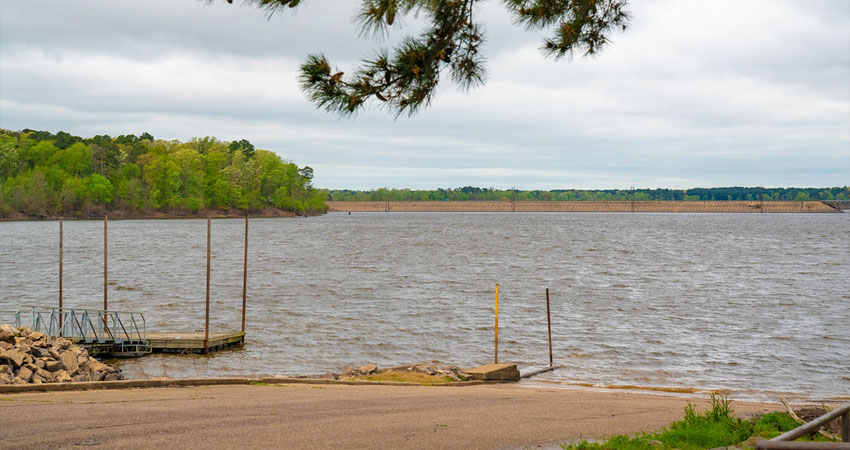
Known for: Lush pine tree forests surrounding the lake
Formerly known as Ferrell’s Bridge Reservoir, Lake O’ the Pines was created in 1956 when Ferrell’s Bridge Dam on the Big Cypress Bayou, primarily for flood control but additionally for wildlife conservation and recreation.
The surrounding pine forests are a gorgeous sight, providing cover for hikers by day and excellent views of the stars by night.
Anglers can catch largemouth, spotted, and white bass; blue, channel, and flathead catfish; crappie, sunfish, and chain pickerel.
Birdwatchers can spot bald eagles, osprey, herons, egrets, pelicans, and various waterfowl and marsh birds.
Essential Information
Location: Marion, Upshur, and Morris Counties, Pineywoods Region, TX
Activities: Boating, sailing, fishing, water skiing, tubing, windsurfing, swimming, hunting, wildlife viewing, birdwatching, picnicking, hiking, biking
Popular access points: Alley Creek Park, Brushy Creek Park, Buckhorn Creek Park, Johnson Creek Park, Lakeside Park, Hurricane Creek Park, Cedar Springs Park
Nearby services and amenities: Marinas, boat ramps, fishing platforms, picnic amenities, showers, restrooms, playgrounds,
Where to stay: Hotels, motels, cabins, campgrounds, RV parks
Nearby places of interest: Daingerfield State Park, Thomas Falls Zipline, Greer Farm
More information:
- Lake O’ the Pines
- Lake O’ the Pines</
- Lake O’ the Pines Chamber of Commerce
- Daingerfield State Park | Texas Parks and Wildlife Department
5. Eagle Mountain Lake
Known as: Boaters’ favorite Texas lake
Eagle Mountain Lake is a reservoir in North Texas that was formed by the damming of the West Fork of the Trinity River in 1932.
It was originally built for flood control, but nowadays it is the favorite lake of boaters and water sports enthusiasts.
In fact, the Fort Worth Boat Club has called Eagle Mountain Lake home since the 1930s and still holds its annual regatta on this lake.
Anglers can catch largemouth and white bass, channel catfish, and white crappie. On the other hand, boaters who want to anchor down and party during the summer can go over to Old Ranch House Slough on the northeast side of the lake and find the Party Cove.
The area around the lake is scenic as well; the hills, bluffs, and mountains that surround the lake have beautiful views, which can be easily accessed from Eagle Mountain Park, which has five miles of hiking trails.
Essential Information
Location: Tarrant County, Prairies & Lakes Region, TX
Activities: Boating, canoeing, kayaking, wake boarding, water skiing, fishing, hiking, biking, golfing
Best access points: Eagle Mountain Park, Shady Grove Park, Twin Points Park, Ash Creek Park
Nearby services and amenities: Marinas, boat ramps, fishing docks, picnic amenities, hiking trails, softball fields, tennis courts, soccer field, basketball court, golf course, playgrounds, restaurants, showers, restrooms
Where to stay: Hotels, vacation rentals, cabins, campgrounds, RV parks
Nearby places of interest: Pelican Island, Fort Worth Nature Center and Refuge, River Valley Motocross Park
More information:
6. Lady Bird Lake
Known as: An urban lake providing a respite from Austin
Lady Bird Lake is fed by Lake Austin, but it is not usually not considered part of the Highland Lakes as it wasn’t built by the LCRA.
Previously called Town Lake, Lady Bird Lake was renamed for former First Lady Claudia Alta “Lady Bird” Johnson.
This lake was created in 1960 with the building of Longhorn Dam on the Colorado River primarily as a cooling pond for the Holly Street Power Plant, but the city funded beautification projects to plant around the lake and a hike-and-bike trail around the shoreline.
The result is an urban oasis right in downtown Austin where people can relax when the concrete jungle of Austin becomes too much.
Trees such as bald cypress, sycamore, cottonwood, elm, and many others provide shade as well as homes for various wildlife such as squirrels, raccoons, and various birds.
Bear in mind, though, that swimming and motorized watercraft are prohibited in this lake.
The scenic Austin skyline provides a beautiful backdrop to the water. In fact, we’ve mentioned taking a guided sunset skyline tour as one of the best things to do on a weekend in Austin.
Hikers and bikers will have fun at Ann and Roy Butler Hike-and-Bike-Trail, which is over 10 miles long. The boardwalk on this trail is also a great spot for bat-watching between the months of March and November. Mexican free-tailed bats hang out on the South Congress Bridge.
The city’s largest park, Zilker Park is a large natural space to launch your paddleboard, canoe, or kayak. There are plenty of lakeside amenities, including picnic tables, canoe rentals, and a disc-golf course.
Anglers can expect to catch largemouth bass, channel catfish, common carp, northern pike, and sunfish.
Essential Information
Location: Travis County, Hill Country, TX
Activities: Boating, fishing, paddle boarding, canoeing, kayaking, hiking, biking
Main access: Zilker Park
Nearby services and amenities: Boat launch, picnic amenities, disc-golf course, restaurants
Where to stay: Hotels, motels, bed-and-breakfasts
Nearby places of interest: Zilker Park, Zilker Botanical Gardens, Austin Nature and Science Center, Red Bud Island, Barton Springs Pool
More information:
7. Sam Rayburn Reservoir
Known as: The largest reservoir completely inside Texas
Sam Rayburn Reservoir was formed with the creation of the Sam Rayburn Dam on the Angelina River by the U.S. Army Corps of Engineers for flood control, hydropower, and water supply.
Those who are fans of pristine natural settings will be happy to hang out among the green, lush woods and rolling hills.
Not only is this the largest reservoir in the state, but it’s also one of the best bass fishing lakes in Texas. The lake is home to over 300 fishing tournaments every year, including the Big Bass Splash, the largest amateur fishing tournament in the state.
Fish species that can be caught here include largemouth bass, spotted bass, catfish, and crappie.
However, anglers aren’t the only ones who get to enjoy the lake. Kids can have fun over at Powell Park Marina’s inflatable water park, while adults can go over to the Rayburn Country Resort’s golf course and play a couple of rounds of golf.
Otherwise, you can just take your boat (or rent one) to the lake, drop anchor, and simply take in the sights.
Essential Information
Location: Angelina, Nacogdoches, San Augustine, and Jasper Counties, Pineywoods Region, TX
Activities: Boating, fishing, swimming, water skiing, wakeboarding, picnicking, hiking, birdwatching, wildlife viewing, camping
Best access points: Jackson Hill Park, Twin Dikes Park, Mill Creek Park, San Augustine Park, Rayburn Park, Powell Park
Nearby services and amenities: Marinas, boat ramps, picnic amenities, golf course, hiking trails, horseback trails
Where to stay: Vacation rentals, resorts, inns, lodges, cabins, campgrounds, RV parks
Nearby places of interest: Big Thicket National Preserve, Angelina National Forest, Sabine National Forest
More information:
- Lake Sam Rayburn</
- Sam Rayburn Reservoir
- Angelina National Forest | USDA Forest Service
- Big Thicket National Preserve | US National Park Service
8. Caddo Lake
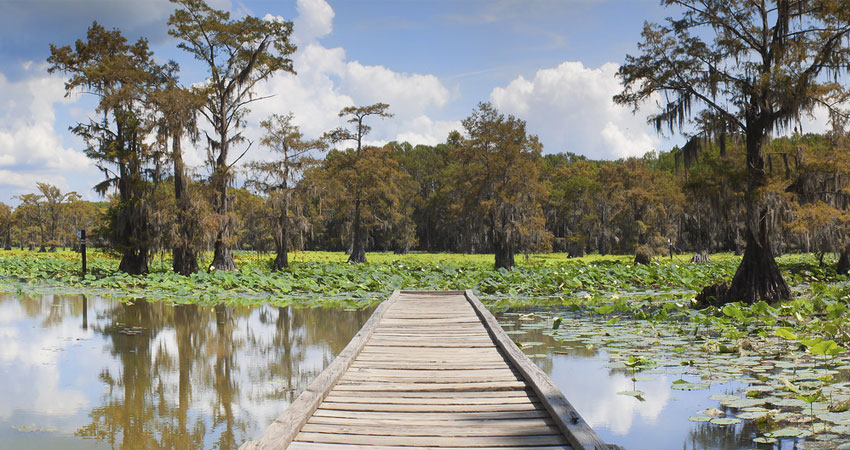
Known as: The most famous and one of the largest natural lakes in Texas
Caddo Lake lies on the Texas–Louisiana border and is one of the few natural lakes in the state that’s not an oxbow lake.
A unique feature of this lake is that it features 20,000 acres of cypress swamp. The thick bald cypress trees draped with Spanish moss and waterways between them provide the perfect environment for canoeing and paddling.
There are also plenty of bayous, channels, waterways, sloughs, and ponds to explore in the lake via paddling in a canoe or kayak. Texas has marked 42 miles of paddling paths
More than seventy species of fish live in the lake, making it an angler’s paradise.
It’s not exactly a swimming lake, though; alligators make their homes on the shores and in the lotus and lily pad covered waterways.
Otters, water snakes, turtles, frogs, and many types of waterfowl can also be found on the lake, while the surrounding forests of pine, oak, and hickory are where minks, armadillos, deer, and squirrels live.
Birdwatchers can expect to spot wood ducks, pied-billed grebes, gulls, herons, egrets, owls, as well as the occasional wild turkey, kingfisher, or woodpecker.
Essential Information
Location: Harrison and Marion Counties, Pineywoods Region, TX
Activities: Boating, fishing, paddle boarding, birdwatching, wildlife viewing, hiking, picnicking, camping
Main access: Caddo Lake State Park
Nearby services and amenities: Marinas, boat ramps, fishing pier, restrooms, picnic amenities, restaurants
Where to stay: Motels, cabins, campgrounds, RV parks
More information:
9. Canyon Lake
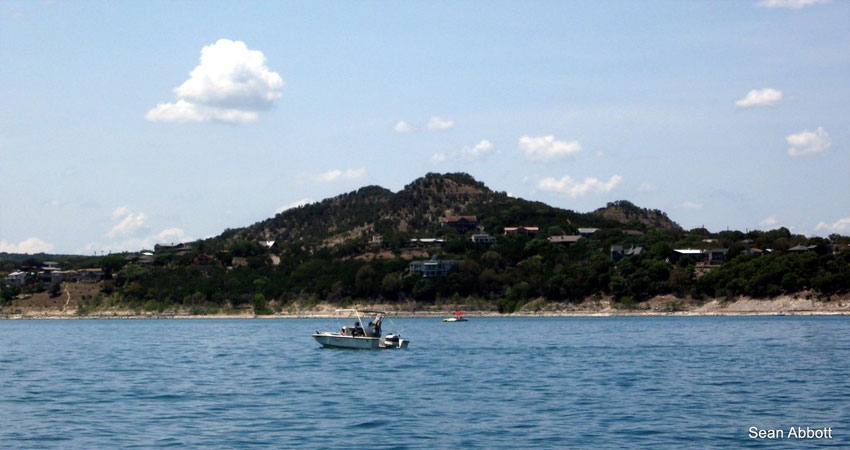
Known as: The Jewel of Texas Hill Country
Canyon Lake was created when Canyon Dam was built on the Guadalupe River for flood control and water conservation in 1958.
Nowadays, it’s considered by many as the jewel of Texas Hill Country and the water recreation capital of Texas, with eight parks managed by the U.S. Army Corps of Engineers as well as other parks along its 130-mile shoreline for various watersports and recreational activities.
Anglers will have fun fishing for largemouth, smallmouth, Guadalupe, striped, and white bass as well as catfish.
Guided sunset cruises and river excursions are popular activities to do on this lake, as well as guided tours of fossils and 100-million-year-old dinosaur tracks.
Essential Information
Location: Comal County, Hill Country, TX
Activities: Boating, canoeing, kayaking, fishing, swimming, jet skiing, scuba diving, tubing, parasailing, hiking, biking, horseback riding, wildlife viewing, birdwatching, golfing, picnicking, camping
Access points: Canyon Park, Fort Sam Houston Recreation Area, Guadalupe Park, Comal Park, Overlook Park, Cranes Mill Park, Potters Creek Park, Jacobs Creek Park, North Park
Nearby services and amenities: Marinas, boat ramps, picnic amenities, hiking trails, biking trails, riding trails, restrooms, restaurants, golf course
Where to stay: Vacation rentals, resorts, hotels, bed and breakfasts, lodges, cabins, campgrounds, RV parks
Nearby places of interest: Canyon Lake Gorge, Schlitterbahn Water Park, Natural Bridge Caverns, Natural Bridge Wildlife Ranch, Heritage Museum of the Texas Hill Country and Dinosaur Tracks
More information:
10. Lake Meredith
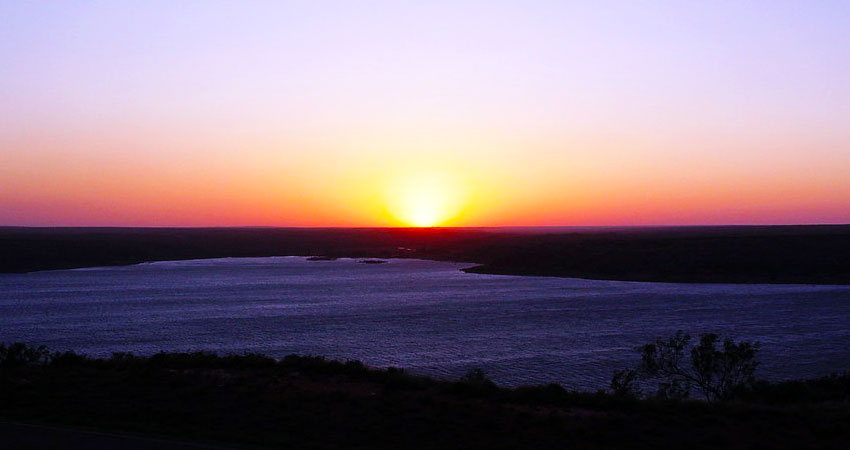
Known as: Hidden oasis in the Texas Panhandle Region; one of the best lakes in Texas to fish for walleye
Within the otherwise dry, windswept plains of the Texas Panhandle is Lake Meredith, created when Sanford Dam was built on the Canadian River.
Water sports are popular in this lake, especially since there are coves to do these activities even when the weather is dry and windy.
Walleye fishing is very popular in this lake, but anglers can fish for other fish such as largemouth and smallmouth bass, crappie, perch, and carp.
The erratic climate of the panhandle almost wiped out the lake in 2013, when the lake level went down to 26 feet. Recent rainy years have almost restored lake levels and heralded a surge in tourism.
Essential Information
Location: Hutchison, Moore, and Potter Counties, Panhandle Plains Region, TX
Activities: Boating, fishing, water skiing, tubing, wakeboarding, hiking, hunting, camping
Main access: Lake Meredith National Recreation Area
Nearby services and amenities: Marinas, boat ramps, picnic amenities, restrooms
Where to stay: Motels, inns, bed-and-breakfasts, campgrounds, RV parks
Nearby places of interest: Alibates Flint Quarries National Monument, Panhandle Plains Historical Museum
More information:
- Lake Meredith National Recreation Area | US National Park Service
- Lake Meredith
- Alibates Flint Quarries National Monument | US National Park Service
- Palo Duro Canyon State Park | Texas Parks and Wildlife Department
Discover new places to relax and enjoy the water with our list of lakes in Texas!
I hope our list inspires you to plan for a lake getaway in Texas.
Grab your sunscreen, swimsuit, and fishing gear, and head out to one of these lakes!
Other things to do in Texas
If you’re coming to Texas to visit one of these lakes, why not check out the best museums in Texas, too? Learn history and marvel at some local art.
Are you planning to visit one of these lakes soon? Which lake are you most interested in going to? Let us know in the comments!

